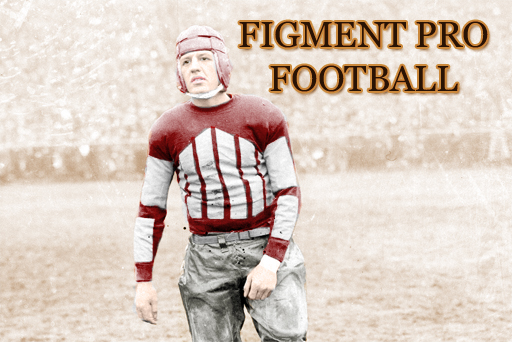It had happened before - and it would happen again. Just as the success of the first pro baseball league had inspired various upstarts to attempt to "horn in on the action," pro football got its first taste of multi-league competition in 1926 when the American Football Association found itself fighting off the upstart Football Alliance of America (FAA). The story played out in a very familiar way for those who had been students of baseball history - the established league (the AFA in this case) was now turning away applicants. Those applicants, angry, decided that if you can't join 'em, then you'd better beat 'em and started their own league.
The FAA placed teams in Boston, Brooklyn, Chicago, Cleveland, New York, Newark, Philadelphia and Youngstown - all current or former AFA locales - and then went one better and put a team in... Los Angeles. Well, sort of. The Los Angeles Crusaders would play no games in the City of Angels. They were a travelling team. But the FAA had big plans and they set about implementing them by following the long-established blueprint. Step one - sign away the other guys' players. And they did, sometimes by giving the player the team, as was the case for Jack Barrell, who was handed the keys to the FAA's Chicago Chiefs entry.
Ah, the Roaring Twenties. A time of excess that extended into pro sports. The number of teams attempting to get in on the professional football fun continued to rise. Much the same as what had happened in baseball in the previous century, the AFA President's office was now turning away clubs in an effort to keep the league to a "respectable" size. That size, going into the 1925 season, turned out to be 20 clubs. Sure, the revolving door continued to turn: out were the Minneapolis Lumberjacks, Evansville Lions and Kenosha Chiefs - all cities that many felt were too "small" for a big-time outfit. The grumbles coming out of places like Chicago and Detroit were that the AFA needed teams in the big east-coast cities had been heard as the New York Stars, Boston Minutemen, Baltimore Browns and Toronto Maple Leafs joined the circuit. That was largely due to the relaxation of the Blue Laws that had always prevented Sunday sporting events in those cities.
Once the teams hit the field, it became obvious that the big money held by those East Coast cities that had been denied membership in previous years was now powering some talented football clubs. The Cleveland Finches were named champions after posting a 12-1-1 mark, but it was not without controversy. The Baltimore Browns went 11-1-0 and Toronto went 10-1-1 while New York went 9-2-1. Baltimore loudly proclaimed that they should be the champs. As usual, Jack Kristich, AFA President stood firm on his decision, but it was clear that the power in the AFA now resided in the Eastern cities (even Philadelphia, playing a grueling schedule, posted a nice 11-5-4 record). The best "western" team was the Detroit Maroons - Rollie Barrell's boys went 8-4-1, good for sixth-place on the official league standings board.
